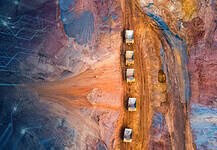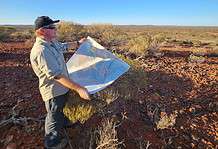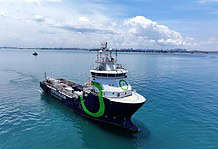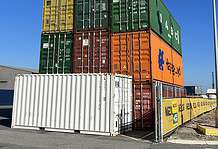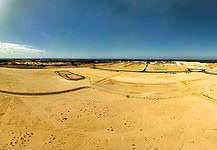They are a fluke of nature and the ultimate in luxury, made in Australia.
Discovered in a dusty creek bed in WA, today Argyle diamonds can be found every place diamonds are loved – sparkling in jewellery store windows to royal palaces to weddings to prized collections.
Rio Tinto geologist Murray says while it’s hard enough to find a diamond deposit, getting a treasure trove of pink, red, blue, violet, champagne and cognac diamonds is “really something else”.
“What we discovered at Argyle was an entirely new specimen of diamond,” he said.
“It changed diamond markets forever and showed coloured gems in a whole new light – not just the famous Argyle pinks, which represented less than 1% of production, but champagne and cognac gems too.
“When Argyle came on stream it virtually doubled world diamond production overnight and became the world’s largest producer of coloured diamonds.”
Nearly 40 years and more than 865m carats later, the last Argyle diamond was mined in November 2020. Today, the mine has begun its transition to closure.
“A huge part of the appeal of Argyle diamonds is their story – where they come from,” Murray said.
The story of all diamonds begins deep within the Earth, and at least a billion years ago – that’s about twice as old as life on dry land. Diamonds form from carbon that has been subjected to extremely high temperatures – around 1100o Celsius – and pressures over long periods of time. These conditions exist only at depths of 120-250km beneath the surface of the Earth, in a part of the planet known as the mantle.
“All diamonds start as white, but certain conditions – like pressure and stress – change their colour,” Murray said.
“Pink diamonds are even more extraordinary because there’s a very small window when the heat and pressure turns them into the magnificent fancy pinks, reds, purples and blues Argyle is famous for.
“And right at that moment a volcanic eruption has brought them to the surface.”
A New Chapter
It’s not so much the end as a new beginning . Over the next five years Rio will rehabilitate the land before handing it back to its traditional custodians – the Miriuwung, Gidja, Malgnin and Wularr peoples.
Argyle represents not only an extraordinary geological phenomenon, but a unique story of breaking moulds and challenging stereotypes.
From the beginning there was the challenge of attracting attention to an unusually high proportion of small, coloured diamonds, almost all in what are now known as the champagne colours and in strong demand in fashion jewellery in all major markets around the world.
At the other end of the coloured diamond spectrum, the strong market reaction in 1984 to the small but consistent volume of Argyle pink diamonds launched an icon: they became the Rolls Royce of the diamond market. They speak the language of exclusivity, desirability and collectability.
After running for almost 40 years, the annual Argyle Pink Diamonds Tender – which features a carefully curated catalogue of the finest gems from Argyle and an exclusive, invitation-only clientele – will end in 2021.
“I’ve had people from all over the world tell me: ‘the gems are beautiful, but it’s not about the diamonds – it’s about their origin, their honourable pedigree and their story,” Murray said.
Like all great stories, this one has an end. But no diamond story would be complete without a happily ever after.
The rich, rare and romantic hues of our Argyle diamonds will live on in the hearts of everyone they touch, and as the lasting legacy of the East Kimberley, a wild, extraordinary corner of Australia.



